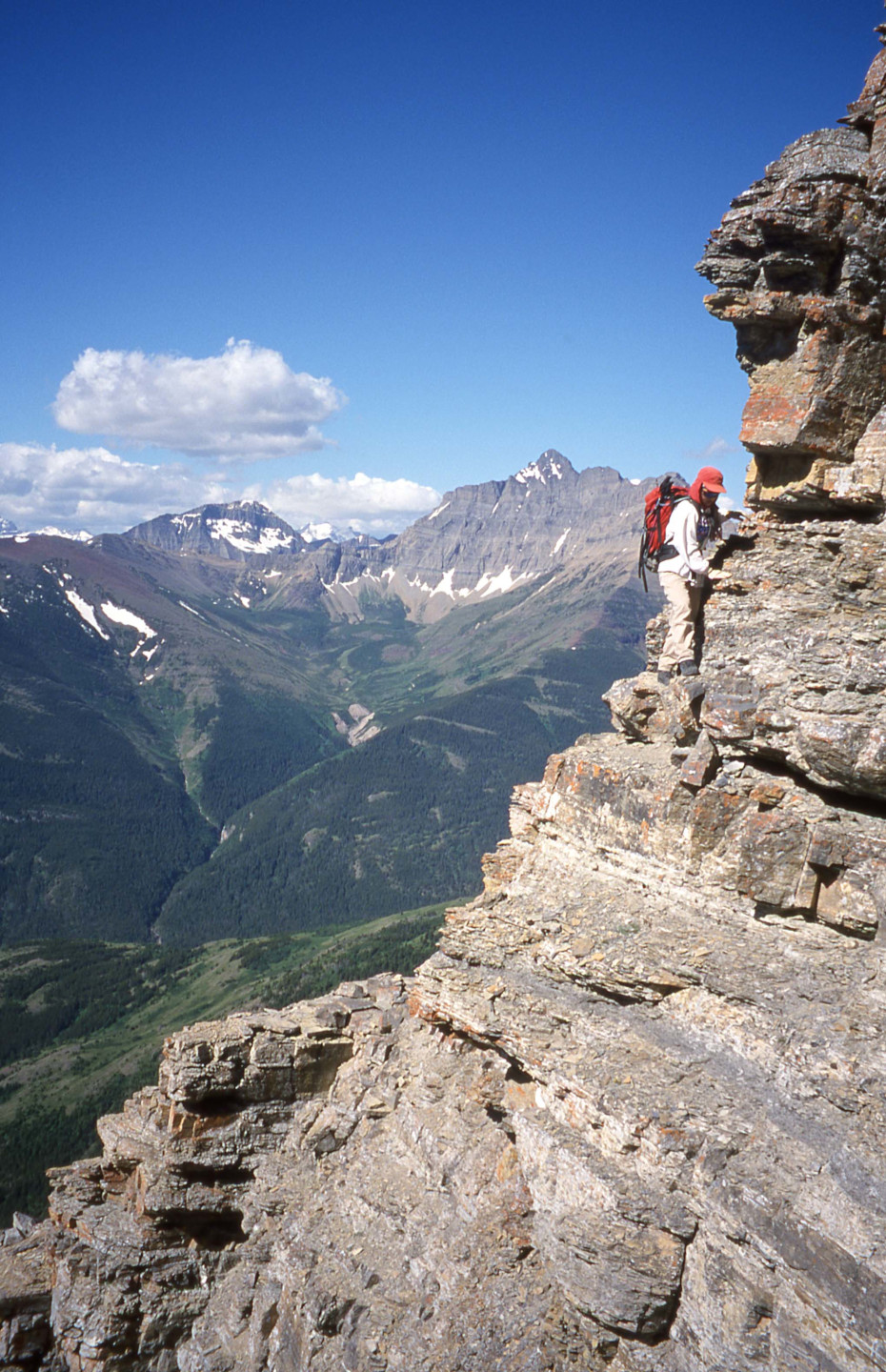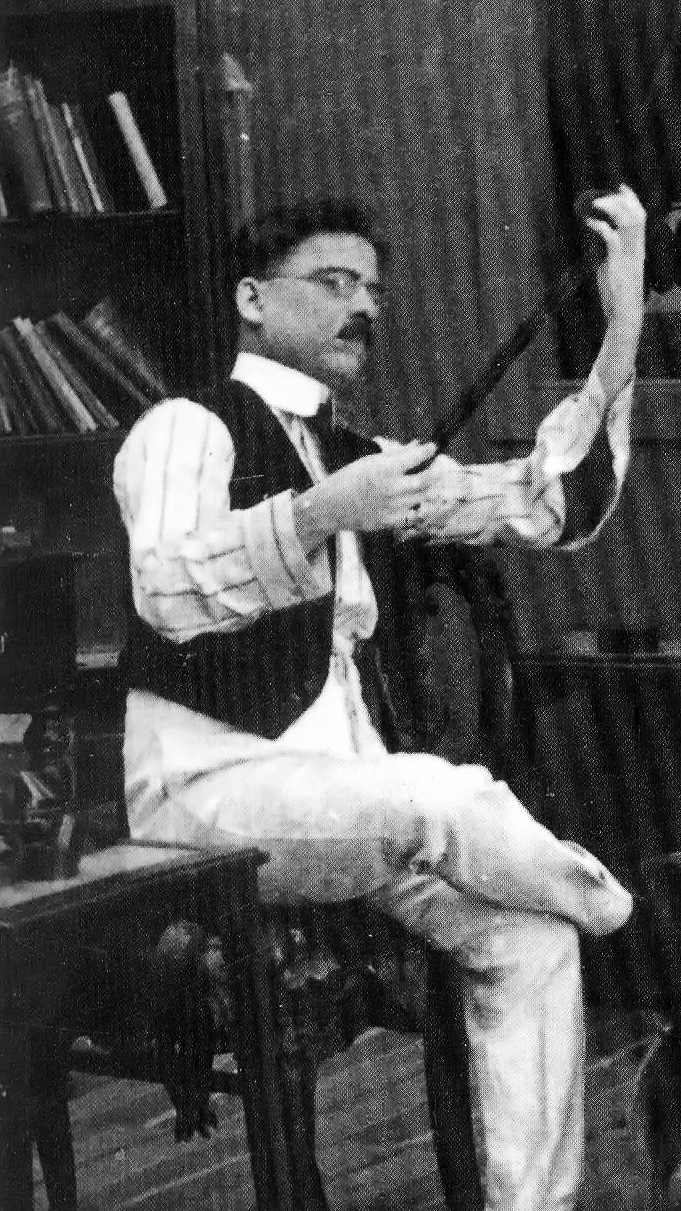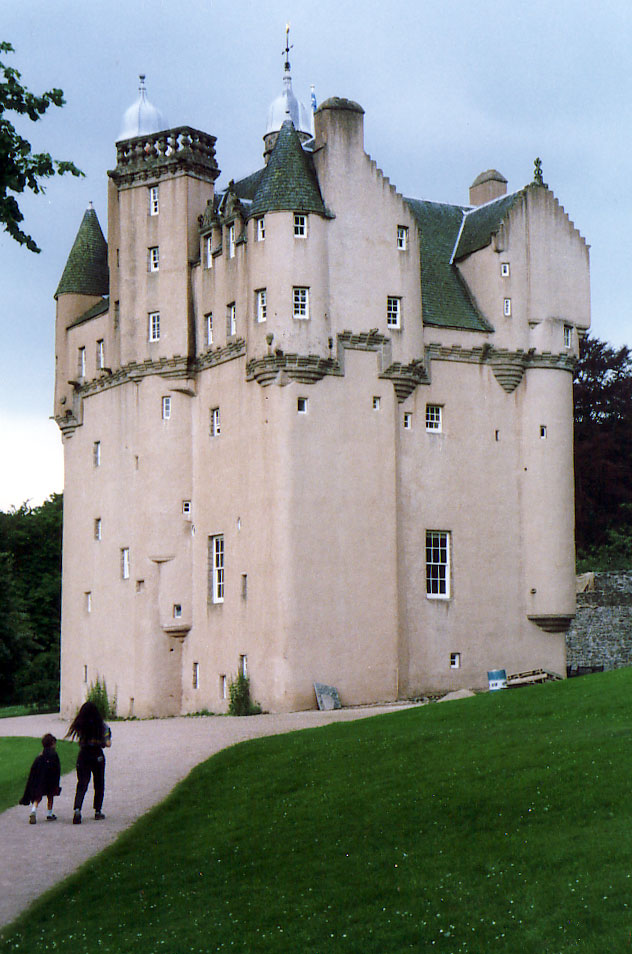|
Buachaille Etive Mòr
Buachaille Etive Mòr (), , 'great herdsman of Glen Etive, Etive'), also known simply in English as 'The Buachaille', is a mountain at the head of Glen Etive in the Scottish Highlands, Highlands of Scotland. Its pyramidal shape, as seen from the northeast, makes it one of the most recognisable mountains in Scotland, and one of the most depicted on postcards and calendars. Buachaille Etive Mòr is a large ridge nearly five miles (8 km) long, almost entirely encircled by the River Etive and its tributary the River Coupall. The ridge contains four main peaks: from north-east to south-west these are Stob Dearg (1,021.4 m), Stob na Doire (1,011 m), Stob Coire Altruim (941 m) and Stob na Bròige (956 m). Stob Dearg and Stob na Bròige are both Munros; the latter was promoted to Munro status by the Scottish Mountaineering Club in 1997. To the west is the smaller ridge, Buachaille Etive Beag. Climbing The steep, cliff, craggy north-eastern face of Stob De ... [...More Info...] [...Related Items...] OR: [Wikipedia] [Google] [Baidu] |
Glen Etive
Glen Etive () is a glen in the Scottish Highlands. The River Etive () rises on the peaks surrounding Rannoch Moor, with several tributary streams coming together at the Kings House Hotel, at the head of Glen Coe. From the Kings House, the Etive flows for about 18 km, reaching the sea loch, Loch Etive. The river and its tributaries are popular with whitewater kayakers and at high water levels it is a test piece of the area and a classic run. At the north end of Glen Etive lie the two mountains known as the "Herdsmen of Etive": Buachaille Etive Mòr and Buachaille Etive Beag. Other peaks accessible from the Glen include Ben Starav, located near the head of Loch Etive, and Beinn Fhionnlaidh (Creran), Beinn Fhionnlaidh on the northern side of the glen. The scenic beauty of the glen has led to its inclusion the Ben Nevis and Glen Coe National Scenic Area, one of 40 such areas in Scotland. A narrow road from the Kings House Hotel runs down the glen, serving several houses and f ... [...More Info...] [...Related Items...] OR: [Wikipedia] [Google] [Baidu] |
Scrambling
Scrambling is a mountaineering term for ascending steep terrain using one's hands to assist in holds and balance.''New Oxford American Dictionary''. It can be described as being between hiking and climbing, rock climbing. "A scramble" is a related term, denoting terrain that could be ascended in this way. Sure-footedness and a head for heights are essential. Canyoning and stream climbing both involve scrambling. Overview Scrambling is ascending or traversing a grade without technical apparatus. Unroped ascent in exposure (heights), exposed situations is potentially one of the most dangerous of mountaineering activities. As soon as an ascent involves a rope, going up or down, it is no longer a scramble. Alpine scrambling Alpine scrambling is scrambling in high mountains and may not follow a defined or waymarked path. The Seattle Mountaineers climbing organization defines alpine scrambling as follows: Alpine Scrambles are off-trail trips, often on snow or rock, with a 'non-t ... [...More Info...] [...Related Items...] OR: [Wikipedia] [Google] [Baidu] |
The Scotsman
''The Scotsman'' is a Scottish compact (newspaper), compact newspaper and daily news website headquartered in Edinburgh. First established as a radical political paper in 1817, it began daily publication in 1855 and remained a broadsheet until August 2004. Its parent company, National World, also publishes the ''Edinburgh Evening News''. It had an audited print circulation of 8,762 for July to December 2022. Its website, Scotsman.com, had an average of 138,000 unique visitors a day as of 2017. The title celebrated its bicentenary on 25 January 2017. History ''The Scotsman'' was conceived in 1816 and first launched on 25 January 1817 as a liberal weekly newspaper by lawyer William Ritchie (Newspaper Editor), William Ritchie and customs official Charles Maclaren in response to the "unblushing subservience" of competing newspapers to the Edinburgh establishment. These two plus John Ramsay McCulloch were co-founders of the venture. The paper was pledged to "impartiality, firm ... [...More Info...] [...Related Items...] OR: [Wikipedia] [Google] [Baidu] |
Kuch Kuch Hota Hai
''Kuch Kuch Hota Hai'' (transl. ''Something Happens'') is a 1998 Indian Hindi-language romantic comedy-drama film written and directed by Karan Johar, in his directorial debut, and produced by his father Yash Johar. It stars Shah Rukh Khan, Kajol, Rani Mukerji, Salman Khan and Sana Saeed. Set primarily across two time periods, the narrative follows the love-triangle between college friends Rahul, Anjali, and Tina. Years later, Rahul’s young daughter attempts to reunite him with his former best friend. The film was shot in India, Mauritius, and Scotland, with Johar intending to bring a contemporary visual style to mainstream Hindi cinema. The soundtrack was composed by Jatin–Lalit, with lyrics by Sameer; it became the highest-selling Bollywood music album of the year. ''Kuch Kuch Hota Hai'' was released theatrically on 16 October 1998, coinciding with the Diwali weekend. It received generally positive reviews from critics, who praised its direction, performances, mu ... [...More Info...] [...Related Items...] OR: [Wikipedia] [Google] [Baidu] |
Bollywood
Hindi cinema, popularly known as Bollywood and formerly as Bombay cinema, is primarily produced in Mumbai. The popular term Bollywood is a portmanteau of "Bombay" (former name of Mumbai) and "Cinema of the United States, Hollywood". The industry, producing films in the Hindi language, is a part of the larger Indian cinema industry, which also includes Cinema of South India, South Indian cinema and other smaller Cinema of India#Cinema by language, film industries. The term 'Bollywood', often mistakenly used to refer to Indian cinema as a whole, only refers to Hindi-language films, with Indian cinema being an umbrella term that includes all the Cinema of India#Cinema by language, film industries in the country, each offering films in diverse languages and styles. In 2017, Indian cinema produced 1,986 feature films, of which the largest number, 364, have been in Hindi. In 2022, Hindi cinema represented 33% of box office revenue, followed by Telugu cinema, Telugu and Tamil cine ... [...More Info...] [...Related Items...] OR: [Wikipedia] [Google] [Baidu] |
National Trust For Scotland
The National Trust for Scotland () is a Scottish Building preservation and conservation trusts in the UK, conservation organisation. It is the largest membership organisation in Scotland and describes itself as "the charity that cares for, shares and speaks up for Scotland's magnificent heritage". The trust owns and manages around 130 properties and of land, including List of castles in Scotland, castles, ancient small dwellings, historic sites, Gardens in Scotland, gardens, coastline, mountains and countryside. It is similar in function to the National Trust, which covers England, Wales, and Northern Ireland, and to National trust, other national trusts worldwide. History The trust was established in 1931 as the "National Trust for Scotland for Places of Historic Interest or Natural Beauty", following discussions held in the smoking room of Pollok House. The Trust was incorporated on 1 May 1931, with John Stewart-Murray, 8th Duke of Atholl being elected as its first presiden ... [...More Info...] [...Related Items...] OR: [Wikipedia] [Google] [Baidu] |
A82 Road (Scotland)
The A82 is a major road in Scotland that runs from Glasgow to Inverness via Fort William. It is one of the principal north-south routes in Scotland and is mostly a trunk road managed by Transport Scotland, who view it as an important link from the Central Belt to the Scottish Highlands and beyond. The road passes close to numerous landmarks, including Loch Lomond, Rannoch Moor, Glen Coe, the Ballachulish Bridge, Ben Nevis, the Commando Memorial, Loch Ness, and Urquhart Castle. Along with the A9 and the A90 it is one of the three major north–south trunk roads connecting the Central Belt to the North. The route is derived in several places from the military roads constructed through the Highlands by General George Wade and Major William Caulfeild in the 18th century, along with later roads constructed by Thomas Telford in the 19th. The modern route is based on that designed by Telford, but with a number of improvements primarily dating from the 1920s and 30s. These incl ... [...More Info...] [...Related Items...] OR: [Wikipedia] [Google] [Baidu] |
River Coupall
A river is a natural stream of fresh water that flows on land or inside Subterranean river, caves towards another body of water at a lower elevation, such as an ocean, lake, or another river. A river may run dry before reaching the end of its course if it runs out of water, or only flow during certain seasons. Rivers are regulated by the water cycle, the processes by which water moves around the Earth. Water first enters rivers through precipitation, whether from rainfall, the Runoff (hydrology), runoff of water down a slope, the melting of glaciers or snow, or seepage from aquifers beneath the surface of the Earth. Rivers flow in channeled watercourses and merge in confluences to form drainage basins, or catchments, areas where surface water eventually flows to a common outlet. Rivers have a great effect on the landscape around them. They may regularly overflow their Bank (geography), banks and flood the surrounding area, spreading nutrients to the surrounding area. Sedime ... [...More Info...] [...Related Items...] OR: [Wikipedia] [Google] [Baidu] |
2009 Buachaille Etive Mòr Avalanche
9 (nine) is the natural number following and preceding . Evolution of the Hindu–Arabic digit Circa 300 BC, as part of the Brahmi numerals, various Indians wrote a digit 9 similar in shape to the modern closing question mark without the bottom dot. The Kshatrapa, Andhra and Gupta started curving the bottom vertical line coming up with a -look-alike. How the numbers got to their Gupta form is open to considerable debate. The Nagari continued the bottom stroke to make a circle and enclose the 3-look-alike, in much the same way that the sign @ encircles a lowercase ''a''. As time went on, the enclosing circle became bigger and its line continued beyond the circle downwards, as the 3-look-alike became smaller. Soon, all that was left of the 3-look-alike was a squiggle. The Arabs simply connected that squiggle to the downward stroke at the middle and subsequent European change was purely cosmetic. While the shape of the glyph for the digit 9 has an ascender in most modern typefa ... [...More Info...] [...Related Items...] OR: [Wikipedia] [Google] [Baidu] |
Cirque
A (; from the Latin word ) is an amphitheatre-like valley formed by Glacier#Erosion, glacial erosion. Alternative names for this landform are corrie (from , meaning a pot or cauldron) and ; ). A cirque may also be a similarly shaped landform arising from fluvial erosion. The concave shape of a glacial cirque is open on the downhill side, while the cupped section is generally steep. Cliff-like slopes, down which ice and glaciated debris combine and converge, form the three or more higher sides. The floor of the cirque ends up bowl-shaped, as it is the complex convergence zone of combining ice flows from multiple directions and their accompanying rock burdens. Hence, it experiences somewhat greater erosion forces and is most often overdeepening, overdeepened below the level of the cirque's low-side outlet (stage) and its down-slope (backstage) valley. If the cirque is subject to seasonal melting, the floor of the cirque most often forms a tarn (lake), tarn (small lake) behind a d ... [...More Info...] [...Related Items...] OR: [Wikipedia] [Google] [Baidu] |
Stream
A stream is a continuous body of water, body of surface water Current (stream), flowing within the stream bed, bed and bank (geography), banks of a channel (geography), channel. Depending on its location or certain characteristics, a stream may be referred to by a variety of local or regional names. Long, large streams are usually called rivers, while smaller, less voluminous and more intermittent river, intermittent streams are known, amongst others, as brook, creek, rivulet, rill, run, tributary, feeder, freshet, narrow river, and streamlet. The flow of a stream is controlled by three inputs – surface runoff (from precipitation or meltwater), daylighting (streams), daylighted subterranean river, subterranean water, and surfaced groundwater (Spring (hydrology), spring water). The surface and subterranean water are highly variable between periods of rainfall. Groundwater, on the other hand, has a relatively constant input and is controlled more by long-term patterns of pr ... [...More Info...] [...Related Items...] OR: [Wikipedia] [Google] [Baidu] |









